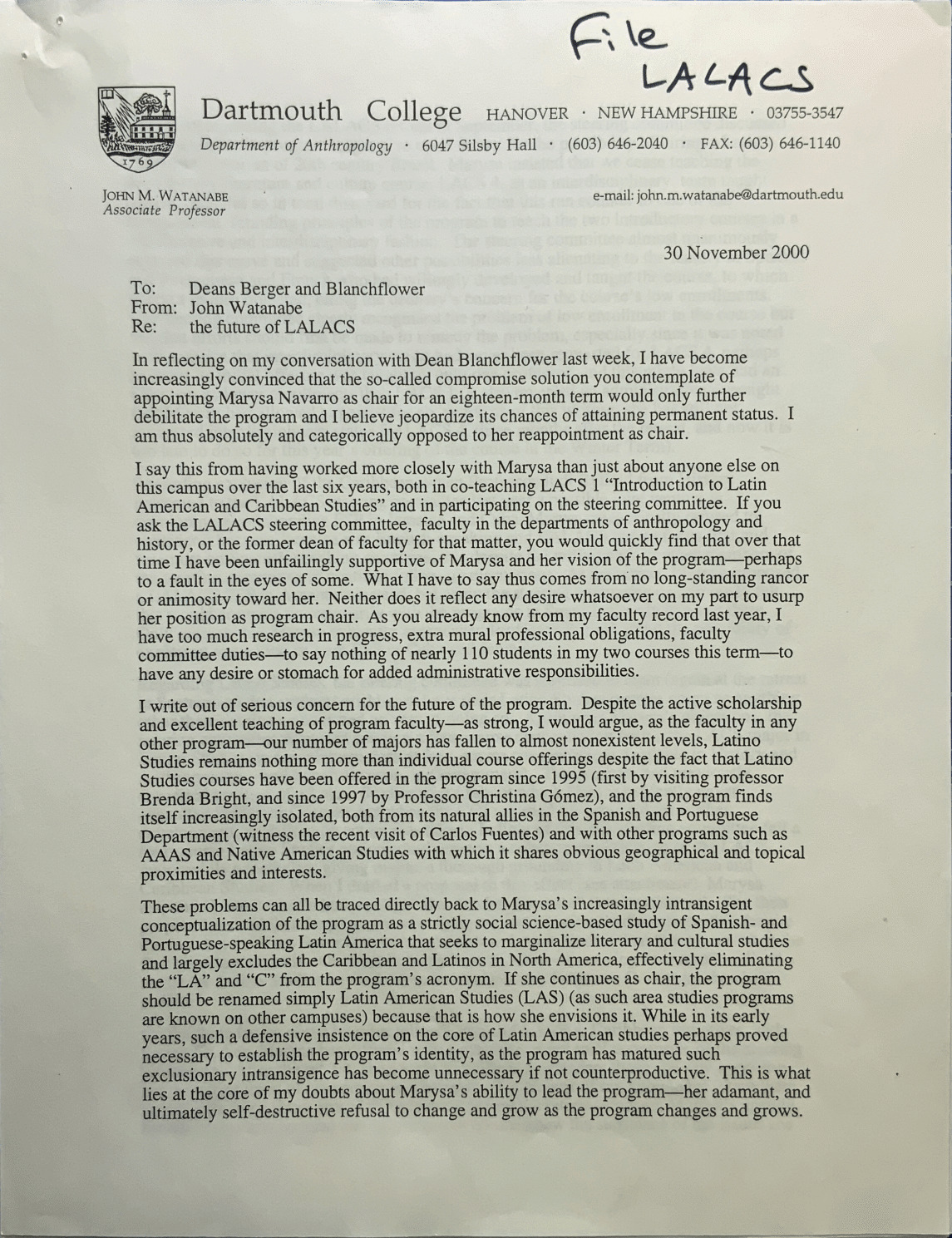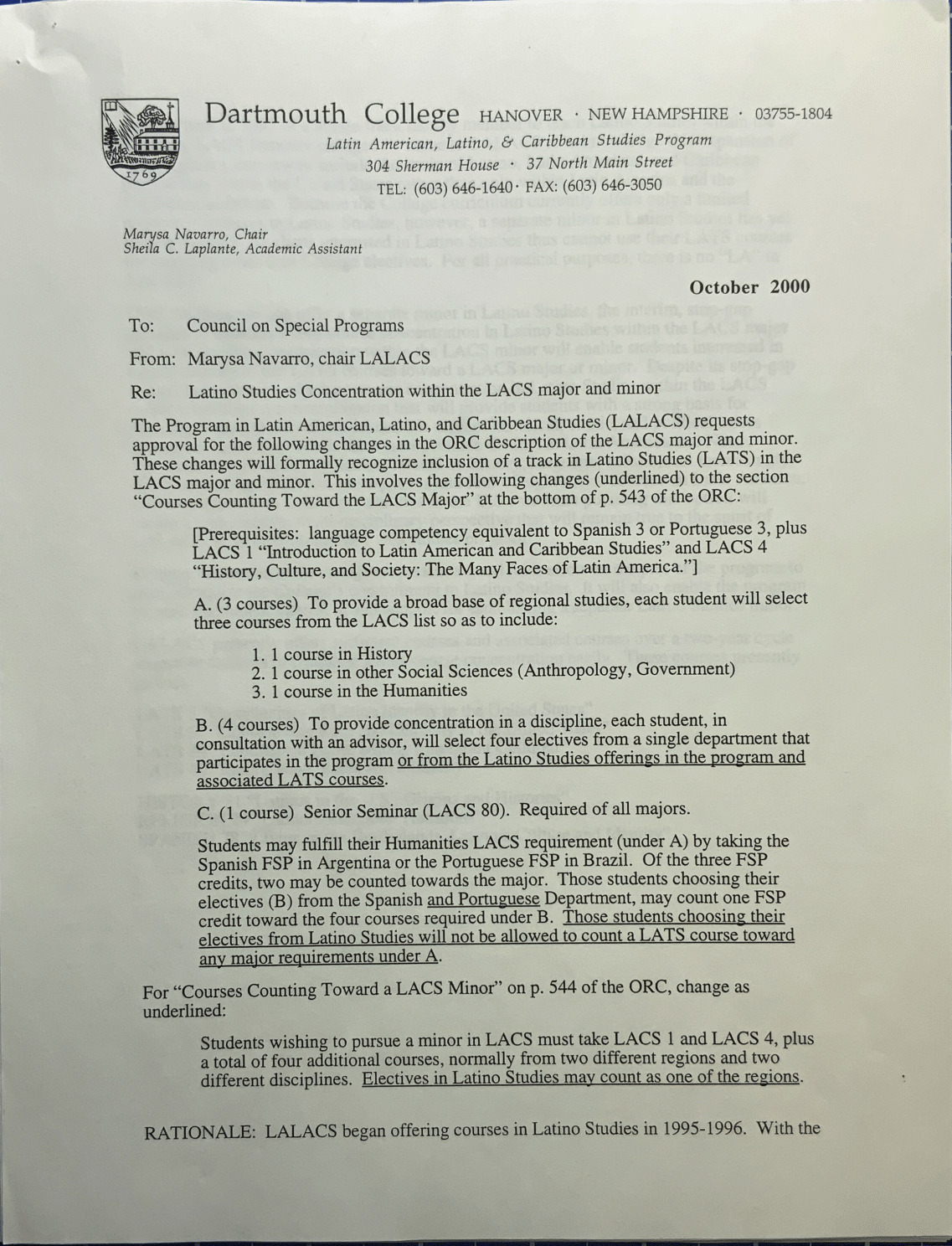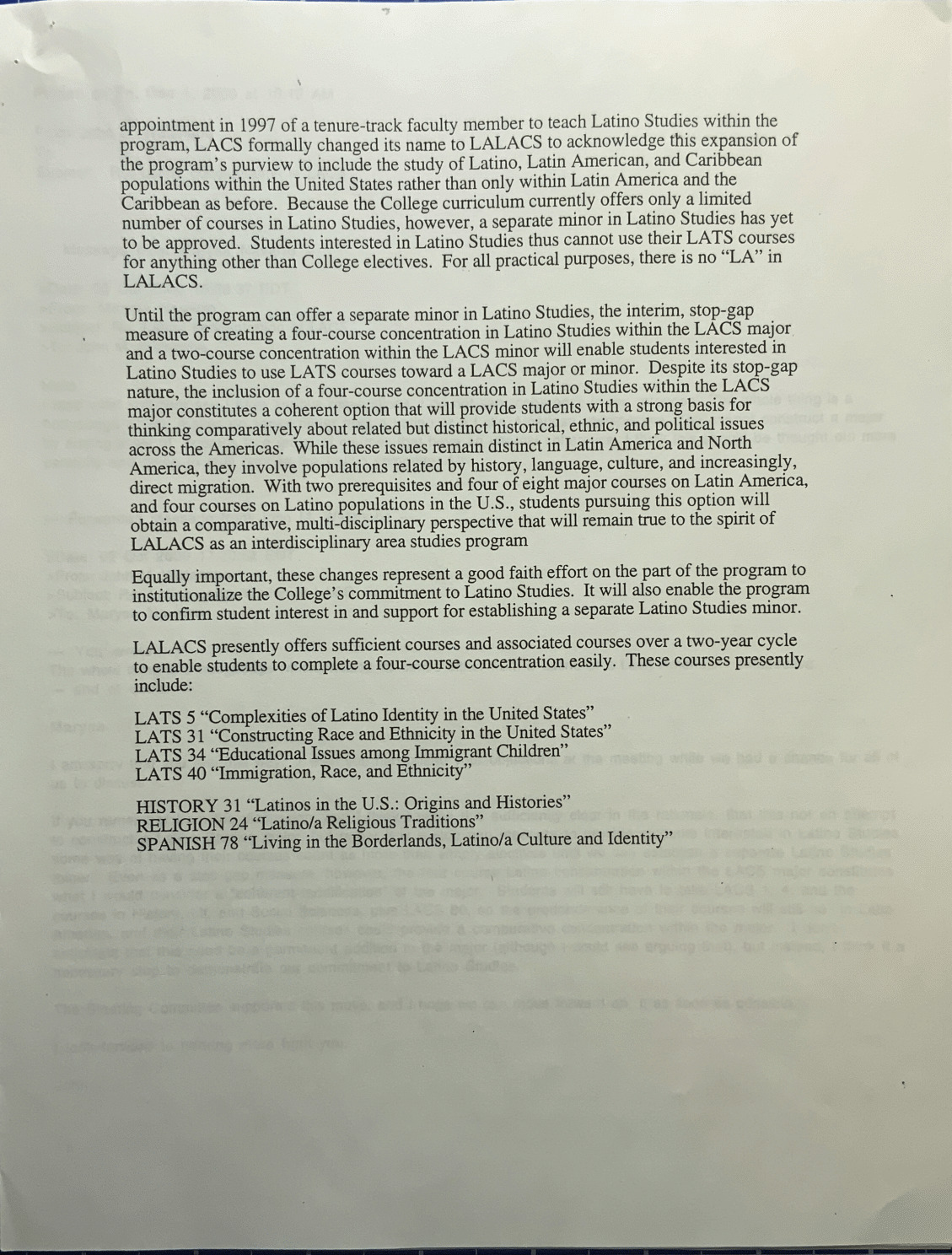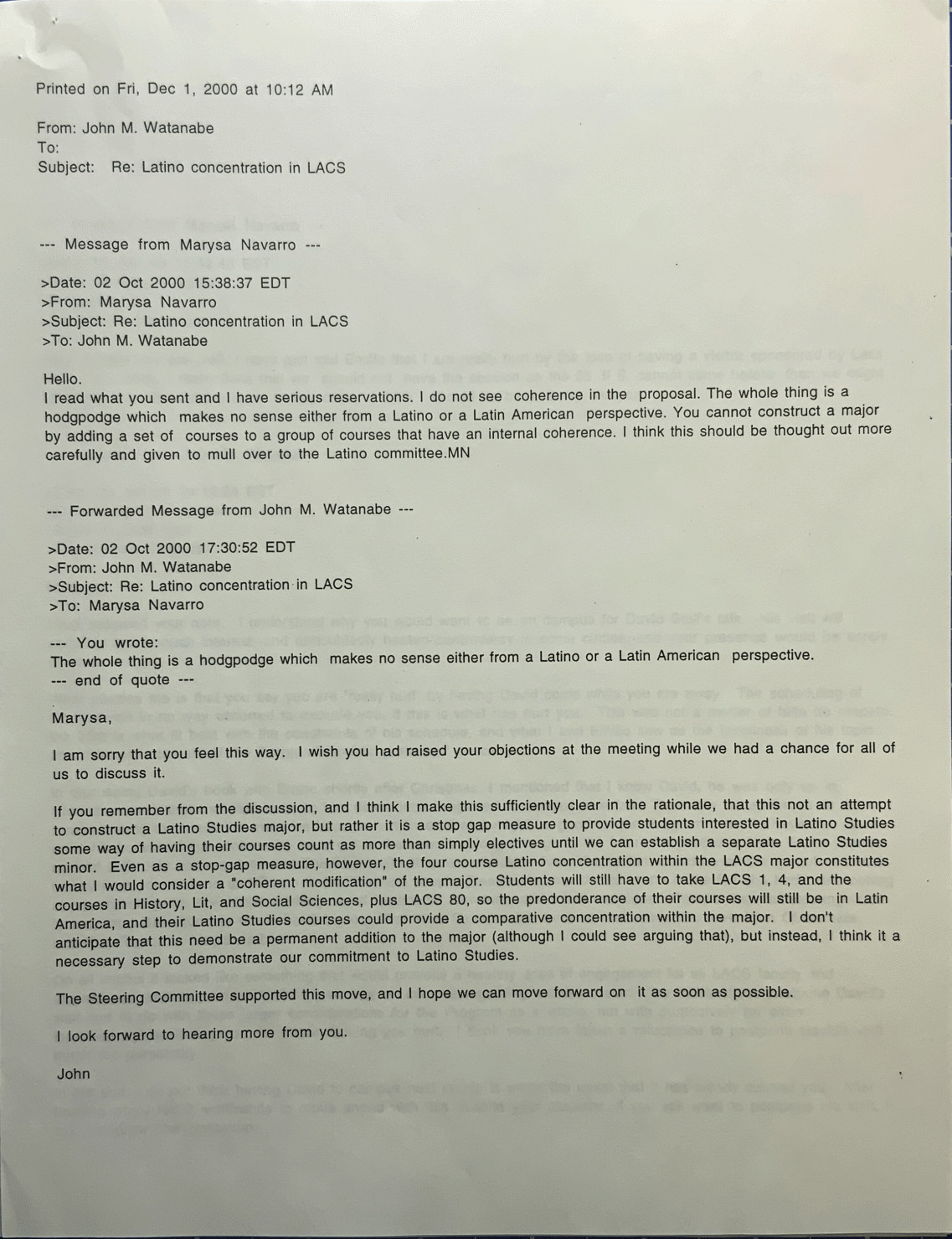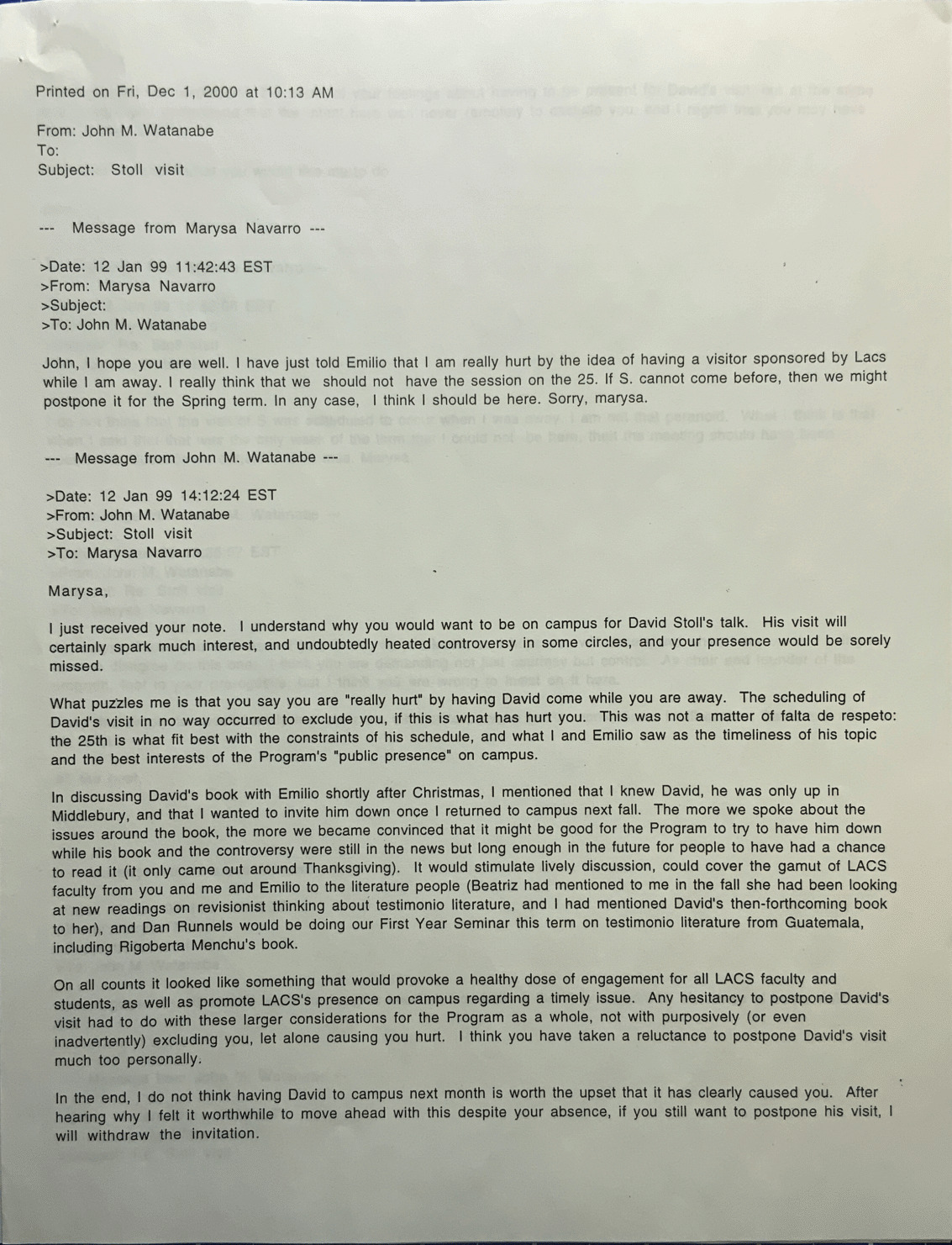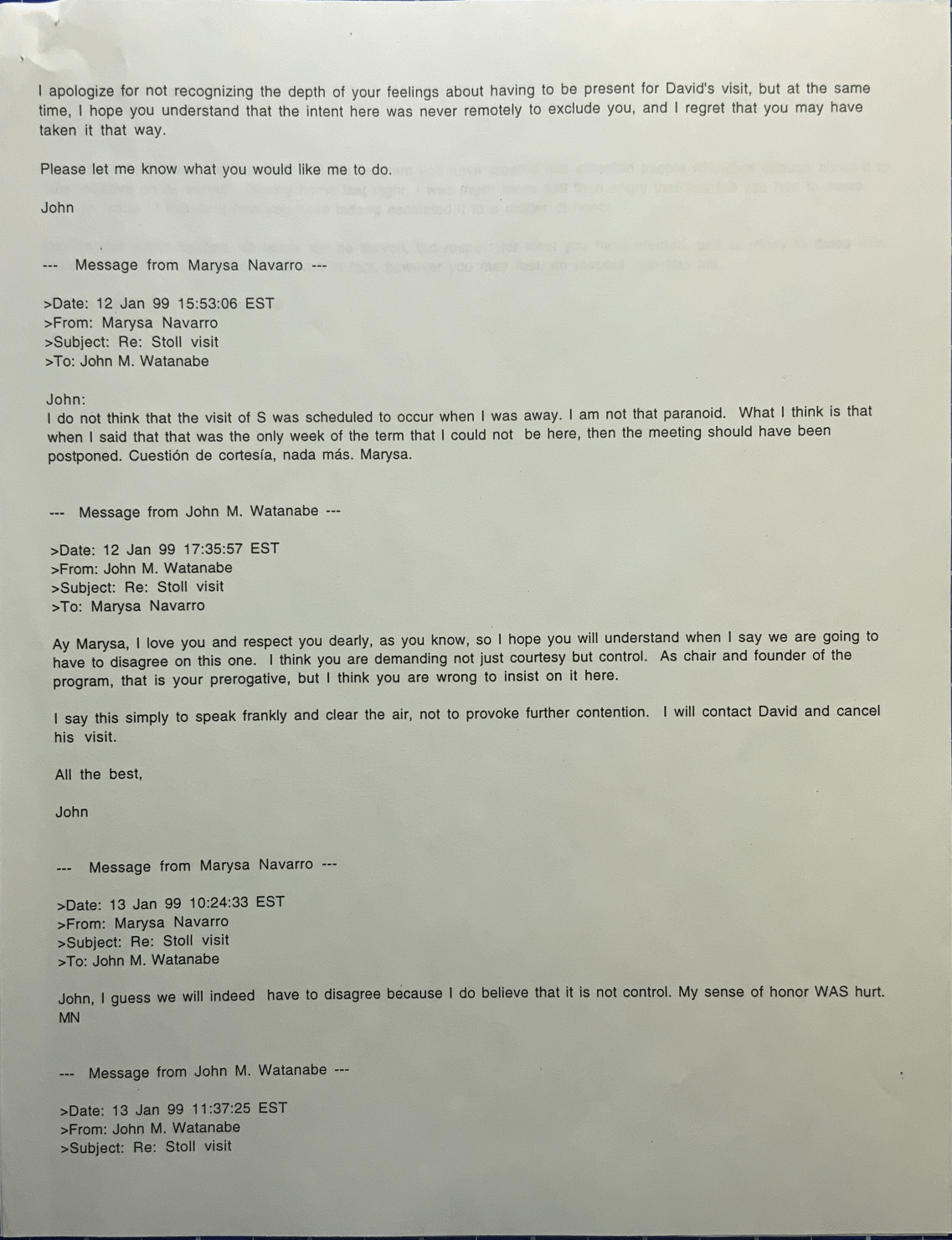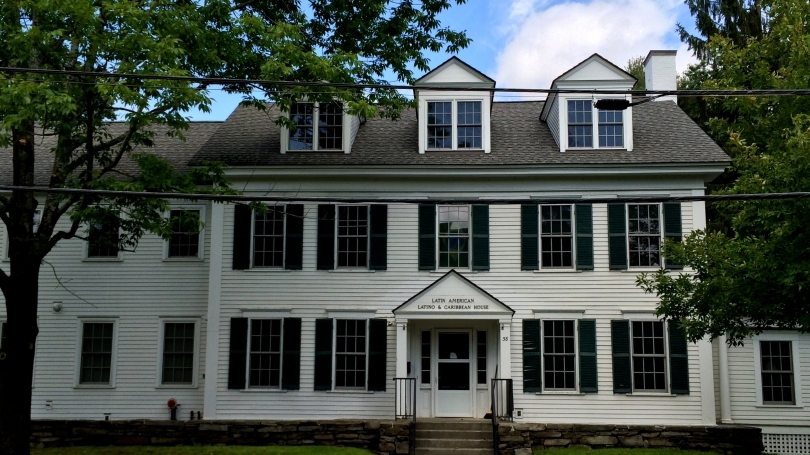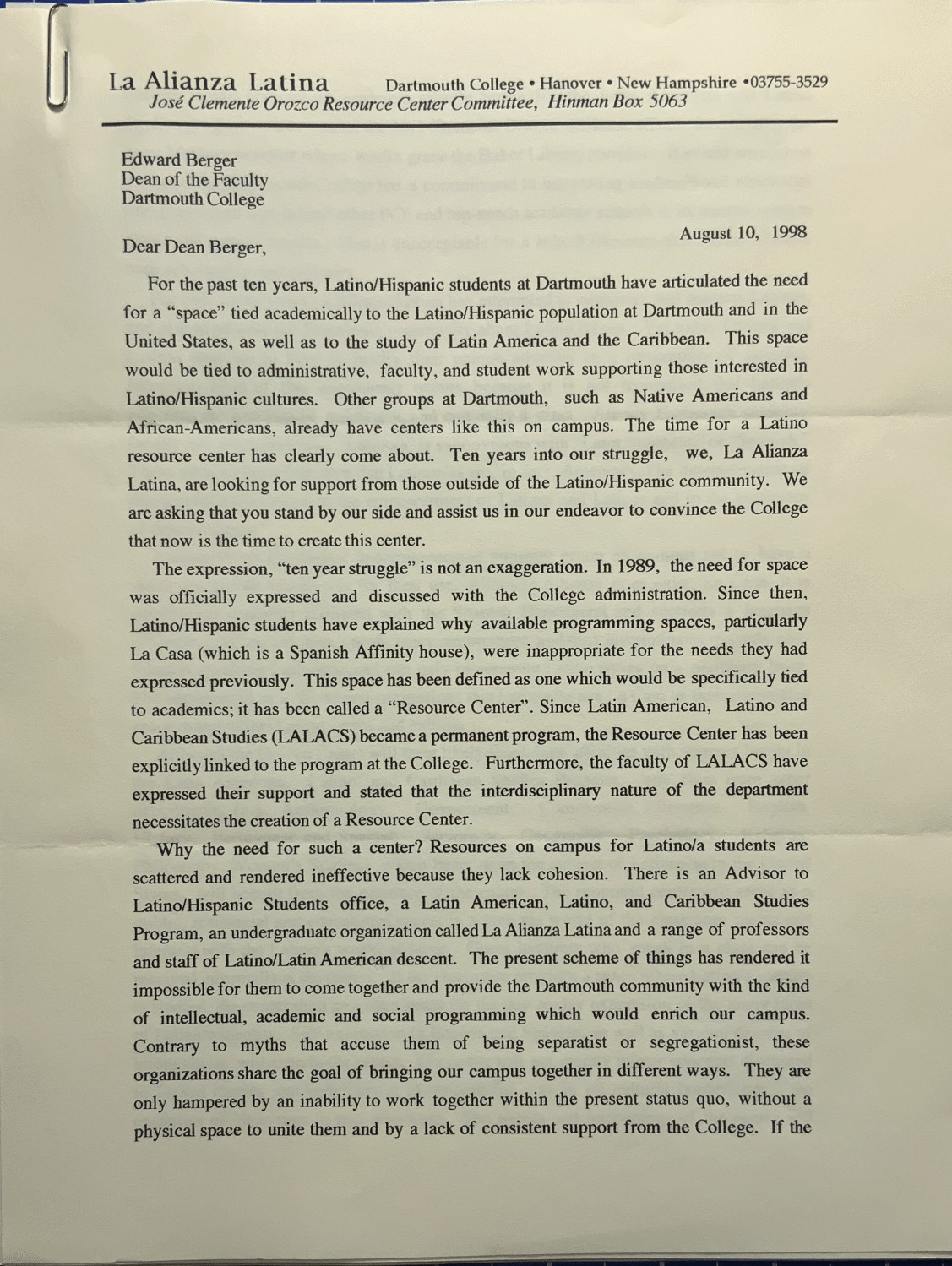1990's - Affinity Houses and the Beginning of LALACS
The Creation of LALACS
The Latin American Studies concentration was only the beginning. In 1993, the Latin American and Carribean Studies (LACS) Program was formed with Marysa Navarro as the chair. While the program was only provided with funding for two years, the pressure from students and professors was enough to provide a permanent place for the 1995-6 school year, and thus the LALACS Department was born. Latino Studies classes were also starting to trickle in around this time, leading to the first professor on a Latino Studies tenure track, Christina Gomez, in 1997. In 1998, a third-year review of the now more-emcompassing Latin America, Latino, and Caribbean Studies Program passed with flying colors, proving its worth and fully cementing its place at Dartmouth.
Following the review, Navarro, as the chair of the department, layed out the priorities of the LALACS Program, which was now full of potential (pictured upper right). She requests more tenure-track staff to meet the growth of the department, shared with other departments like Government or Geography, in addition to more interdisciplinary classes. She cites the increasing numbers of majors and minors in her department, with only one tenured professor, Gomez, to cover them. As she was so heavily cited in the review of the program, she had an intended direction for the program and this is just one example of how she was proactive in pushing her vision.
However, not everyone was on board with Navarro's vision. A year later, other professors who teach in the department, John Watanabe and Beatriz Pastor, sent recommendations against the reappointment of Navarro as chair of the department (former pictured bottom right), explaining how divisive a figure she can be and how she can be quite controlling. The administration reappointed her the following year nonetheless, much to Watanabe's dismay. While being amicable coworkers up to the development of the department, Watanabe and Navarro have correspondences through email that come off quite aggressive (pictured below). In particular, Watanabe notes how she would call the program "LAS" instead of LALACS, getting at her focus on the Latin American part over the equally important Latino and Carribean portions. Disagreements over vision and balance like these might have been solved much earlier in an absence of administrative roadblocks in the creation of the program. However, given the administration's complete handoff to Navarro, likely in a dissmissive fashion, the program did not get a chance to collect input from others and begin with the best chance for success.
Eventually, Navarro stepped away from the chair position, allowing Israel Reyes to take over in 2005. Since then, with the help of DALA and other Latinx organizations, the LALACS Department has grown and thrived, overcoming intradepartment squabbles for the greater good of the students and academia in general.
Affinity Houses
Based on data from Stavans, one of the main reasons universities fail to engage with Latinx students enough to recruit them is due to a lack of Latinx representation. By 1994, this realization came to Dartmouth and so the idea of an affinity house began to float around as a way to better way to support Latinx students. One proposal was to convert the Department of Spanish and Portugese-linked La Casa to be more Latinx-focused. Students from La Alianza Latina, a Latinx social group, argued against this in a letter addressed to Dean Berger (pictured upper left). They stated that a Latinx-devoted house could connect the disparate resources for Latinx students on campus in addition to providing a place for community. This led to the creation of the Latin American, Latino, and Caribbean (LALAC) House (pictured lower left), which reportedly is "devoted to the exploration and expression of traditional and contemporary aspects of Latin American and Latinx intellectual, social, and cultural life."


